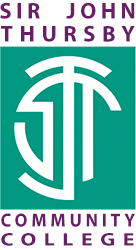Topic 14 Year 7 Mathematics
| Mathematics | |||
| Topic | Conceptualising and comparing fractions | ||
| No of lessons | |||
| When is it happening | Term Year 7 | ||
| What will students lean | This unit builds on knowledge of fractions from KS2. Students explore multiple interpretations of fractions and establish useful language and representations to use alongside these. Fractions are considered simultaneously as a number, as a way of expressing division, as a continuous part-whole model and as a discrete part of a larger set. The representations are built to consider the concepts of equivalent fractions, working with improper and mixed fractions. Students are required to find equivalent fractions including simplifying by finding common factors in the numerator and denominator. | ||
| Key Knowledge that students should know at the end of 'Topic' | This is the knowledge that students will meet for the first time in this topic |
Derive the concept of a fraction by exploring equal parts of a whole. Express fractions greater than one as a mixed number and as a single fraction Express fractions of units of measure. Explore problems involving fractions of quantities. Experience fractions as a division of two integers. Explore different ways to divide integers into fractional parts. Represent and understand equivalent fractions |
|
| This is knowledge that students may have met before but will need to deepen their understanding |
|
||
| Key Skills that students should be able to demonstrate at the end of 'Topic' | This is the skills that students will meet for the first time in this topic |
Adding and subtracting mixed fractions |
|
| This is skills that students may have met before but will need to develop | Adding and subtracting proper fractions | ||
| Key vocabulary that students should know and understand | Fractions, percentage, improper, equivalent, decimal, numerator, denominator | ||
| The Big Question | Can I compare and order fractions? | ||
|
Key questions that students should be able to answer at the end of the 'Topic' |
What is a mixed fraction? | ||
| How can I find fractions of an amount? | |||
| How do fractions show a division? | |||
| How do I identify equivalent fractions? | |||
| How do I compare fractions to find which one is bigger? | |||
| How are equivalent fractions and common denominators useful for accurately comparing fractions? | |||
| What is a decimal fraction and how can it help us make comparisons? | |||
| Can I find the most efficient strategy to compare fractions? | |||
